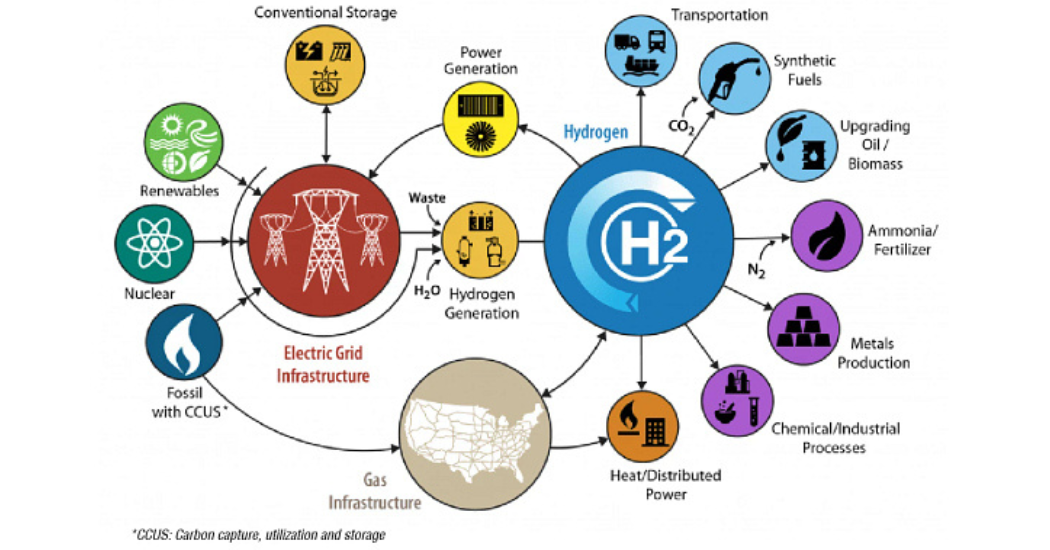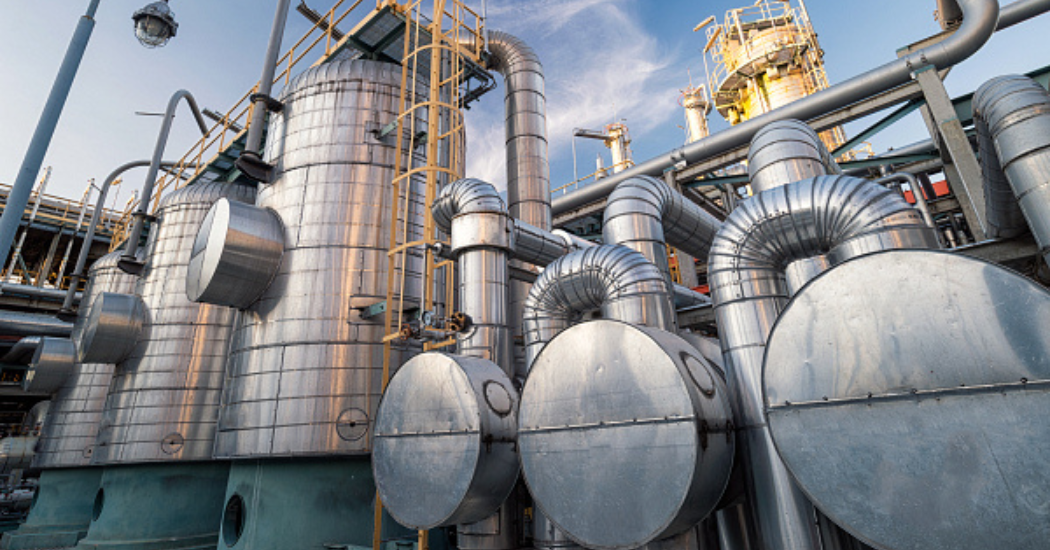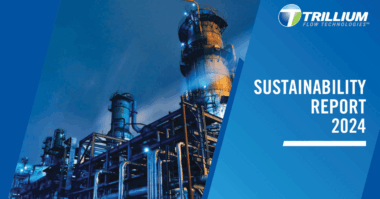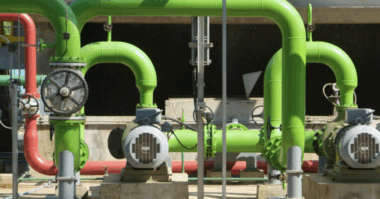Over the past three years, global industries have built significant momentum toward creating an economy in which clean-burning hydrogen (H2) becomes a primary fuel for transportation, heating and powering industrial processes. That’s good news, because H2 is energy-dense, storable, and produces no direct emissions of pollutants or greenhouse gases.
However, much more work must be done.
In 2019, global H2 production was 70 Mt; by the end of 2022, it was 94 Mt — a 34% increase. I consider this a major achievement. But it doesn’t come without a cost.
Most of this H2 was manufactured by burning fossil fuels used by the refining and chemicals industries. Gray H2 production released about 900 Mt of harmful carbon dioxide (CO2) into the atmosphere. That’s not sustainable to companies, nations and jurisdictions expecting to achieve their decarbonization goals and mitigate the global warming effects of greenhouse gas emissions from burning coal and/or oil.

While most H2 is produced through centralized reforming of natural gas, clean alternatives such as electrolysis are increasing
Uses for H2 are also changing. Oil refining and ammonia (NH3) industries are traditional consumers. Emerging applications include industrial processes, biofuels, heat generation, energy storage and transportation.
Source: H2@Scale, U.S. Department of Energy
The nine industry issues you’ll want to know more about
What’s needed is an immediate acceleration of the development of green H2 produced through an electrolysis process powered by renewable energy sources such as solar and wind.
Although there are encouraging signs around the world, there also are critical issues about which we all must learn more and act upon quickly. Rakhi Oli blogged about some of these challenges a few months ago.
To expand on these topics for you, Rakhi Oli has compiled additional insights after hearing presentations and listening to expert presenters at COP27, the World Economic Forum, CERA WEEK, IEA/IRENA, and more recently at the American Hydrogen Forum. Here are nine key takeaways:
1. Proven turbomachinery critical to success
Turbomachinery is among the most significant equipment in the H2 value chain from production to transportation, distribution, storage and utilization. They are also the most critical equipment based upon reliability, availability, maintainability (RAM) analysis, as well as from a perspective that considers capital and operating expenditures.
The greatest technological challenges are certainly the high pressures required, the need to maintain clean gas, and materials that are not subject to embrittlement.
The choice between the different compression technologies is based on the needs for pressures and flow rates. In applications with high flow rates and low compression ratios, a centrifugal compressor is preferable. In applications with low flow rates and high compression ratios, piston compressors are preferred.
A diversified unit within the oil and gas sector, turbomachinery will only become more significant, since each lane of energy transition relies on it.
2. Continuous improvement needed throughout value chain
To advance the H2 economy, continuous improvements in cost and performance of hydrogen-related technologies must be made. This is true at all points of the value chain, including the distribution segment, i.e., gas compression, transportation and storage infrastructure.
H2 is typically produced at relatively low pressures and must be compressed and liquefied prior to transportation. Reciprocating, rotary, ionic and centrifugal compressors are used for gaseous hydrogen compression.
The liquefaction process involves pre-cooling the compressed hydrogen through a heat exchanger and then cooling fully through Joule-Thomson expansion to obtain liquid hydrogen. It is one of the most significant processes for storing hydrogen as a liquid and poses challenges related to extremely low temperatures.
H2 is transported from the point of production to points of use via pipeline and in cryogenic liquid tanker trucks or gaseous tube trailers. Pipelines are typically deployed in regions with substantial demand, whereas liquefaction plants, liquid tankers and tube trailers are deployed in regions with smaller-scale demand. Some transportation equipment such as tube trailers involve high pressures of up to 250 bar for gaseous hydrogen.
H2 can be stored as either a gas or a liquid. Storage as a gas typically requires high-pressure tanks. Storing hydrogen as a liquid requires maintaining cryogenic temperatures and handling high pressures.
3. Designing for manufacture to reduce costs
Capital costs for many H2 production technologies are substantially higher than those for other fuels. Developers and engineering, procurement and construction (EPC) consultants are working to reduce these costs by designing for manufacture principles. They’re focused on finding better materials, decreasing the number of necessary parts, designing simplified systems, and moving into mass production at low-cost centers around the world.
Although industry has made great progress commercializing H2 production routes while considering cost competitiveness, we must also expand the distribution, infrastructure and transportation segment of the H2 value chain. This will help us overcome the market mismatch between infrastructure deployment and H2 production.
4. Developing unified industry standards and policies
Industry stakeholders must develop long-term, stable policy frameworks to guide the commercialization of H2 technologies and energy transition in all sectors, including energy, transport, industry and residential.
There’s also an urgent need to improve H2 technology safety. Specifically, we must develop a unified vision of regulations, codes and standards coupled with certification schemes that provide for transparency, consumer trust and tradability.
Industry cooperation on these issues is underway. The Accelerating Clean Hydrogen initiative now has more than 200 members from 60 organizations, including public and private stakeholders. This is up from fewer than 50 members from 20 organizations in 2020.
5. Accelerating blue H2 to deploy clean fuel at scale
Clean hydrogen refers to both green H2 produced through electrolysis powered from renewables and blue H2 produced from natural gas in conjunction with carbon capture and storage (CCS) by steam methane reforming (SMR).
Natural gas has become the key to rapid, low-cost decarbonation worldwide, which marks a complete change in tone from last year. It also reflects a shift in the U.S. Department of Energy (DOE) policy and strategy frameworks.
But this is essential. In order to achieve net-zero carbon emissions, we need an estimated 200 Mt of H2 by 2030. H2 and its derivatives will account for 12% of global final energy demand in 2050.
Both blue and green sources will be required to achieve a twofold scale-up of H2 production and a major shift away from gray H2 worldwide. While the industry works to scale up green H2 and make it cost-competitive, in the near-term, deployment of blue H2 by accelerating CCUS is pertinent to holistically support net-zero 2030 and 2050 targets.
6. We need more speed to execute
On the path to net-zero carbon emissions, speed to execution matters most. Exploring the value proposition each hydrogen “color” brings is interesting, but it can be an unproductive distraction. Instead, we should focus on the far more important and urgent needs to speed up execution and increase H2 deployment, taking into consideration the socioeconomic conditions, geographic and commercial barriers and drivers, and cost competitiveness of the deployment locations.
Although that’s happening, it needs to be accelerated. More than 680 global projects worth over $240 billion have been announced. Europe is making strides toward its green H2 economy, but only about 10% of the announced projects have reached final investment decision (FID).
About $750 billion in projects will be needed by 2030 in order to substantially increase the rate of worldwide H2 production.
7. Creating a global hydrogen trading market is mandatory
There’s a minimal financial market for trading H2 or hydrogen derivatives, and producers cannot take on contracts that guarantee the price of H2 they produce. Policymakers, financiers and banking institutions as well as buyers, developers and EPC contractors must come together to create an H2 trading market.
When it comes to the progression of emerging technologies such as green H2, batteries, renewables and CCUS, we must work to remove any us-versus-them divide among industry, government and community. Cooperation will further enable policy and funding initiatives with a strategic industry partnership approach.
8. Integrating H2 into existing gas economies
Liquefied natural gas (LNG) and natural gas (NG) are cost-competitive, scalable and pragmatic fuel choices. For growing economies, they will be destination fuels for years.
Although promising, green H2 is not quite ready for the spotlight compared to LNG and NG from the perspectives of scalability, technological readiness and pricing.
As mentioned in the fifth challenge, in the near term, it makes sense to build upon the existing LNG-NG infrastructure. As a result, the cost-competitiveness of blue H2 can propel the clean hydrogen economy.
Specifically, significant progress can be made by identifying synergies that exist between LNG-NG and H2 to catapult the deployment of hydrogen in transportation, power generation and heavy industries. Prospects will include H2-LNG mixed vehicle refueling stations and gas turbines for power generation fueled by mixing H2 and NG.
All of which will offer the LNG-NG industry the incentives and advantages to integrate with and support development of the clean H2 energy industry.
9. Addressing diversity among H2 stakeholders
An important issue — and one of the greatest challenges constraining the H2 economy — is gender inequality.
A diverse workforce throughout the value chain can lead to better discussions, decisions and outcomes.
Bringing more women leaders into the emerging technology space is one of the significant precursors for any business or organization to drive change. Empowering women to lead H2 industry stakeholder discussions may create transformative partnerships and support overall global growth.
Initiatives such as Women in Green Hydrogen (WiGH) provide a platform to connect and empower engagement by women, but this will need further support from their companies.
Common insights identified by industry leaders at recent global strategic conferences and through leadership forums. Source: Flowserve
Assisting industry with H2 deployment strategies
I have been honored to chair the American Hydrogen Conference since its start in 2021. Over that time, I have witnessed a change in the tone of industry stakeholders when it comes to deploying various H2 technologies, the role of H2 in energy transition, and technology integration. We closed our recent conference with these nine new takeaways that I’ve shared here with the hope that they will assist industry stakeholders in addressing their hydrogen deployment strategies.
Read Flowserve’s Hydrogen Economy – Brochure
About the Author
Rakhi Oli | Global Strategy Leader, LNG and Gas | Houston, Texas, U.S.
Rakhi develops low-carbon strategies for businesses, aligning the Flowserve service and product portfolio with decarbonization, diversification and digitization goals to help customers achieve carbon neutrality objectives. She has 21 years of global industry experience developing and executing multibillion-dollar energy (LNG) infrastructure projects, leading technical design, and project engineering management. Rakhi is a sought-after industry discussion leader and author for international publications. In 2022, she was honored as an ESG & Climate Champion by Ally Energy Awards and as an ExxonMobil Power Play Award finalist.
Watch this interview with Rakhi Oli.




